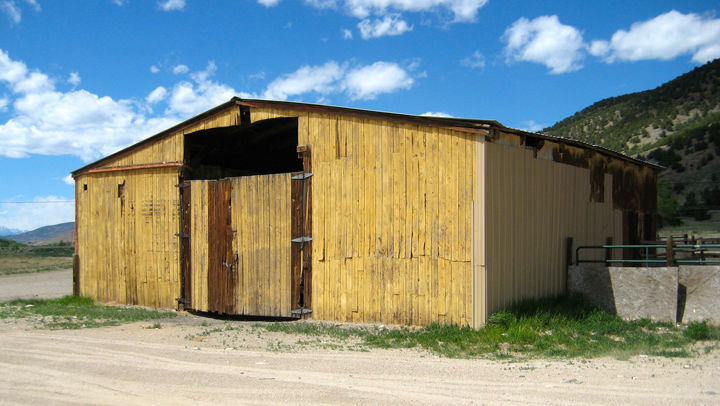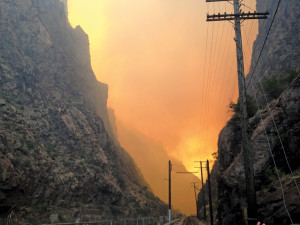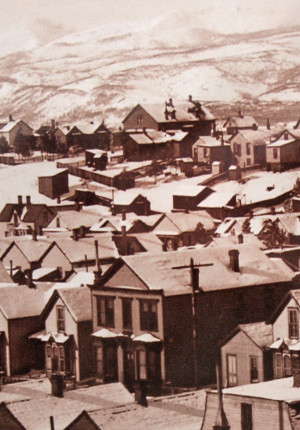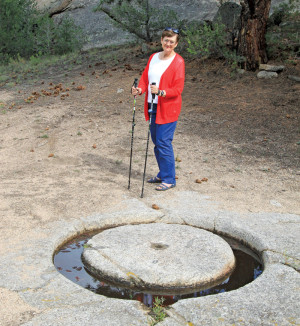One of Chaffee County’s Historic Resources
By Fay Golson for The Chaffee County Heritage Area Advisory Board
“Although farming preceded ranching in Colorado and has long since surpassed it in importance, the great cattle ranches of the seventies and eighties first gave agriculture any considerable weight in the State’s economy,” according Colorado, A Guide to the Highest State by Federal Writers’ Project, first published in 1941. This refers to the 1870s and 1880s.
In 1858 the idea of raising livestock in Colorado began when a prospector discovered his loose oxen could survive on the grassy plains where the city of Denver now stands. The oxen not only survived on the grasses but put weight on doing so. With this discovery, Texas cattle were driven northward to the lower Arkansas River Valley and into other sections of the state. The advance of the railroads soon opened new grazing land in the mountain parks and on the Western Slope.
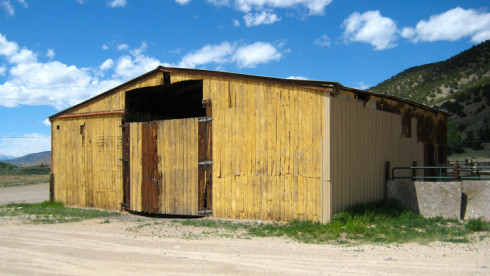
The lack of fences in the early days allowed cattle to stray as far as two hundred miles from their home range. Cowboys were assigned the task of watching over the herds. “By 1879 cowboys were riding herd on 855,000 head of cattle in Colorado, chiefly on great open ranges, part of the public domain,” according to the Federal Writers’ Project publication. During that time, large ranches, encompassing thousands and in some cases millions of acres, controlled much of the stock.
The glory of the powerful cattle baron was relatively short as the ranges became overstocked. Due to the harsh winter of 1886-87 and the drought that soon followed, much of the stock died. Homesteaders began to make claims, reducing the amount of open range, and by the close of the 1800s cattle ranching was scattered and, more often than not, became small-scale businesses. Shorthorns, Herefords and other breeds replaced the Texas Longhorns. In 1939 Colorado was credited with 1,447,000 head of cattle, 243,000 of which were dairy cattle. Sheep had been introduced in the 1870s. Although hogs, horses, mules and poultry were now included on ranches and farms, cattle and sheep represented three-fourths of the livestock.
The trade and sale of livestock has been a feature in our history since the mid-1800s. Railcars of cattle headed for terminal market in Kansas City, Omaha, St. Louis, Denver and Chicago were the preferred mode of transport. Terminal markets provided a forum for competitive livestock marketing. They were the vehicle by which commission firms could negotiate deals between the producer and packer. With the introduction of the truck in 1934, producers had a choice of shipping their stock to local livestock barns rather than distant terminal markets. Rapid growth of these local auction barns was apparent in the 1930s. Soon, fewer trains delivered livestock to distant terminal markets and the local livestock auction markets emerged as the leader in livestock sales.
Rocky Mountain Livestock Sales, Inc. is a local livestock auction facility which continues to serve ranches in a 60- to 100-mile radius. Britt Hughes, son of one of the present owners, Larry Hughes, states that before rail lines and local livestock auction markets were available, ranches would often sell among themselves, avoiding the long cattle drives.
In the 1960s, the facility was one of the largest livestock sale barns in Colorado. Larry Hughes shared that as many as 3,000 to 4,000 head of livestock were sold during an auction. Riders on horseback were used to move livestock to and from the sale barn and corral. The corrals were also used for transshipment of sheep by railroad from Utah. After a couple of days of rest they were shipped on to the eastern states.
Today, livestock at this facility is sold in lots from 30 to 100 head. A full semitrailer load is approximately 50,000 pounds of cattle or 100 head of calves. The stock is contained in corrals upon their arrival each Thursday. They are sorted according to sex and then weighed and examined by a brand inspector and a veterinarian before auction. The livestock is auctioned on Friday. A 30-head lot can be displayed inside the auction facility and takes about two and a half minutes per lot to auction. For larger lots, seen less often now, the auction could take as long as six to eight hours under the guidance of one stalwart auctioneer. The lots are shipped out on Saturday. Ranchers pay for truck transportation to the facility while purchasers pay for transportation from the sale barn.
Although not documented, Britt Hughes states that Rocky Mountain Livestock Sales is unique from other facilities because it is situated at the highest elevation in Colorado for a sale barn; they are therefore able to market cattle that are best suited for higher altitudes. Cattle thrive best when raised at the altitude at which they are pastured while maturing. High altitude cattle shipped to lower regions flourish while the reverse is rarely true.
In 1958, Carl Rundell and Loy Adams built the livestock sale facility. It replaced an older sale barn owned by the two men two miles west on U.S. Hwy. 50, approximately where the McDonald’s restaurant now sits. Elbert W. “Fritz” Rundell and the Hollenbeck family acquired the property in 1968. Rundell, a native of Canon City, enjoyed roping, rodeos and leather work, and announced rodeos, county fairs and 4-H sales. His obituary in the Denver Post noted that he was “thought by many to be one of the premier rodeo announcers and auctioneers in the state.” The sale barn became known as Rocky Mountain Livestock by 1992. Jack D. Jones and Gary Hill succeeded Rundell and the Hollenbeck family as owners. Larry and Tommie Hughes, obtained the property in 1999.
The livestock barn facility is significant to our state’s history of agriculture and ranching. The architecture is representative of mid-20th century livestock sale facilities. The sale barn exhibits important original interior features such as the wood-paneled walls, a semicircular show ring, steeply raked auditorium seating and an auctioneer’s area. The on site restaurant retains many original features as well. The exterior of the barn was once painted white. The original corral system and the hay barn add significance to the facility as a whole.
Rocky Mountain Livestock Sales is located at 5005 East U.S. Hwy. 50. Weekly auctions are held every Friday from September through the winter months and on an as-needed basis in the summer.
According to Goeth, “Life is the childhood of our immortality.” Fay has not yet decided what she wants to be when she grows up. It’s her belief that until one has explored many avenues, that decision will wait. The exploration will not make one immortal, but it sure keeps one busy.

